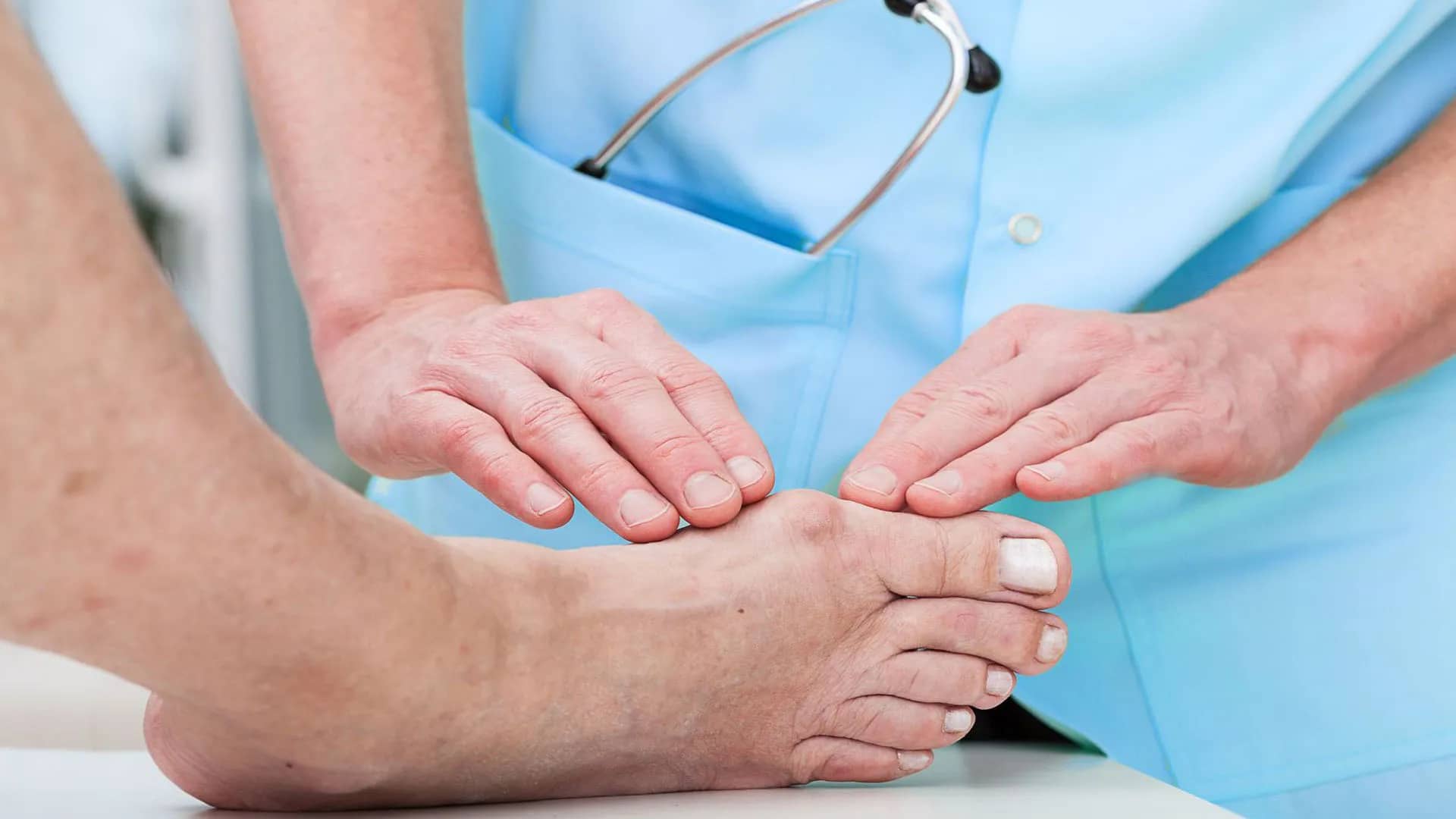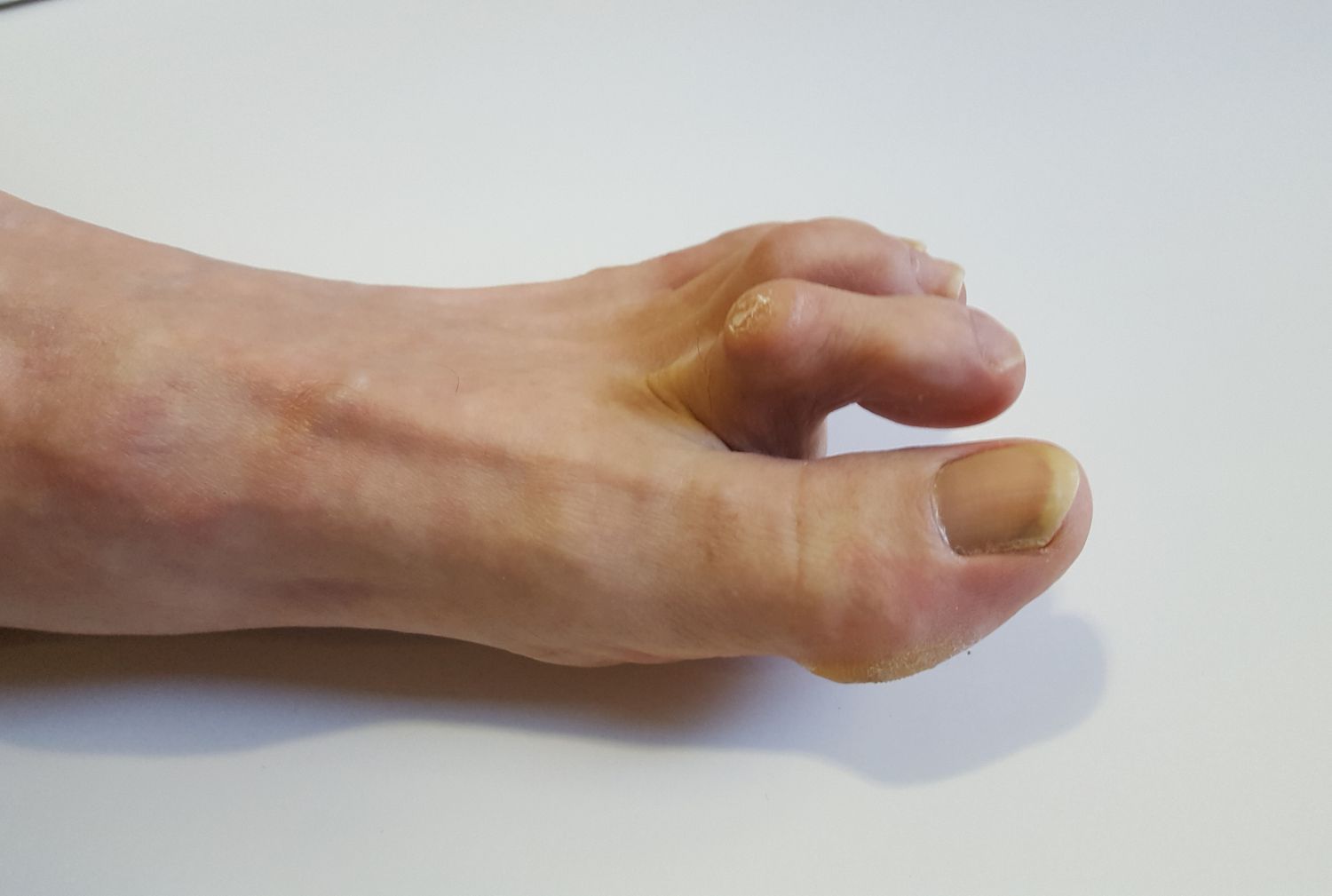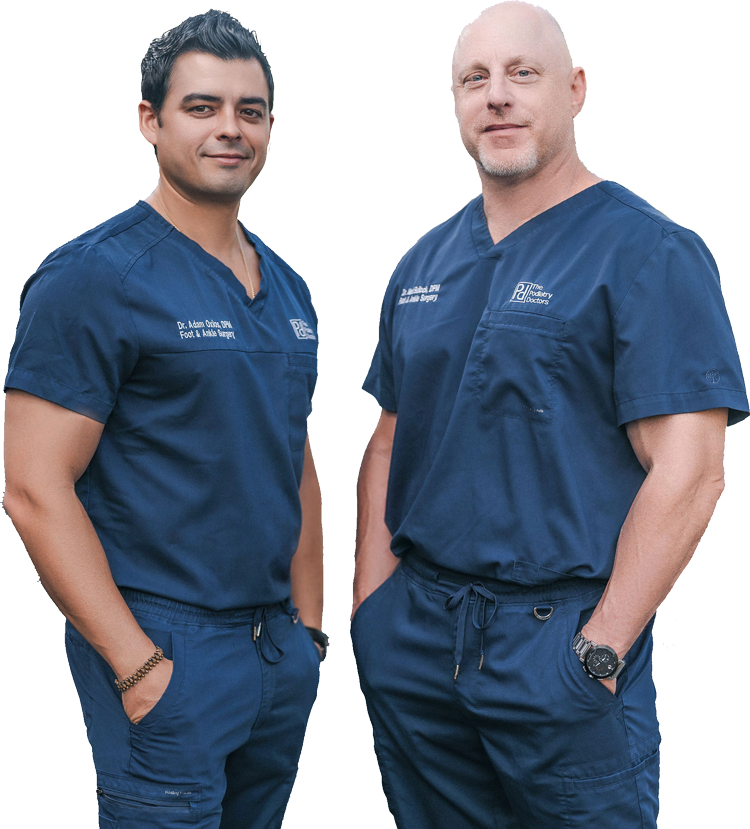
Bunions
Bunions (aka Hallux Abducto Valgus) is a condition where a large bump forms at the base of the big toe (the Hallux). The hallux begins to angle toward the second toe causing a retrograde pressure on the bone behind it. This pushes the joint medially (toward the bodies midline) making the bump more and more prominent over time. As the hallux pushes against the second toe, the second toe must brunt more of the force during ambulation causing it to over-ride the hallux and hammer/curl.
Contributing factors include genetics, shoe wear and prior trauma or arthritis…. so don’t just blame those high heels. Thank mom and dad too.
There are both conservative and surgical treatment modalities. Non-invasive treatment includes taping and padding, removal of hard callus, muscle strengthening exercises, shoe gear modification and orthotics (although they won’t correct the alignment, instead they can help reduce pain and prevent further progression of the bunion). Invasive treatment options include injection therapy and surgery. Many surgical procedures exist however post-op protocol normally consists of 1-4 weeks of “heel-touch” weight-bearing (or non-weightbearing for more drastic procedures) followed by progressive weightbearing over the course of the next few weeks.

Hammertoes
Hammertoes, much like the name implies is a condition where the toe begins to hammer, or curl. Causes include improper shoe wear, as well as multiple anatomic and mechanical abnormalities (the most common being flatfoot and a tight Achilles tendon). If the hammered toe isn’t addressed, the soft tissues conform to that position making the deformity less reducible. Furthermore, with the toe in a hammered position (hyperextension at the MPJ), the structures under the balls of the feet become stretched out and thin. This can lead to pain underneath the forefoot (metatarsalgia) as well as in the toe.
Conservative measures include strapping/taping as well as shoe modification and orthotic use. If the deformity is already fixed or non-reducible, surgery is usually considered to straighten out the toe. Recovery consists of keeping the toe clean and dry while the sutures are still in and allowing the patient to start “heel-touch” ambulation as soon as they can tolerate it.



